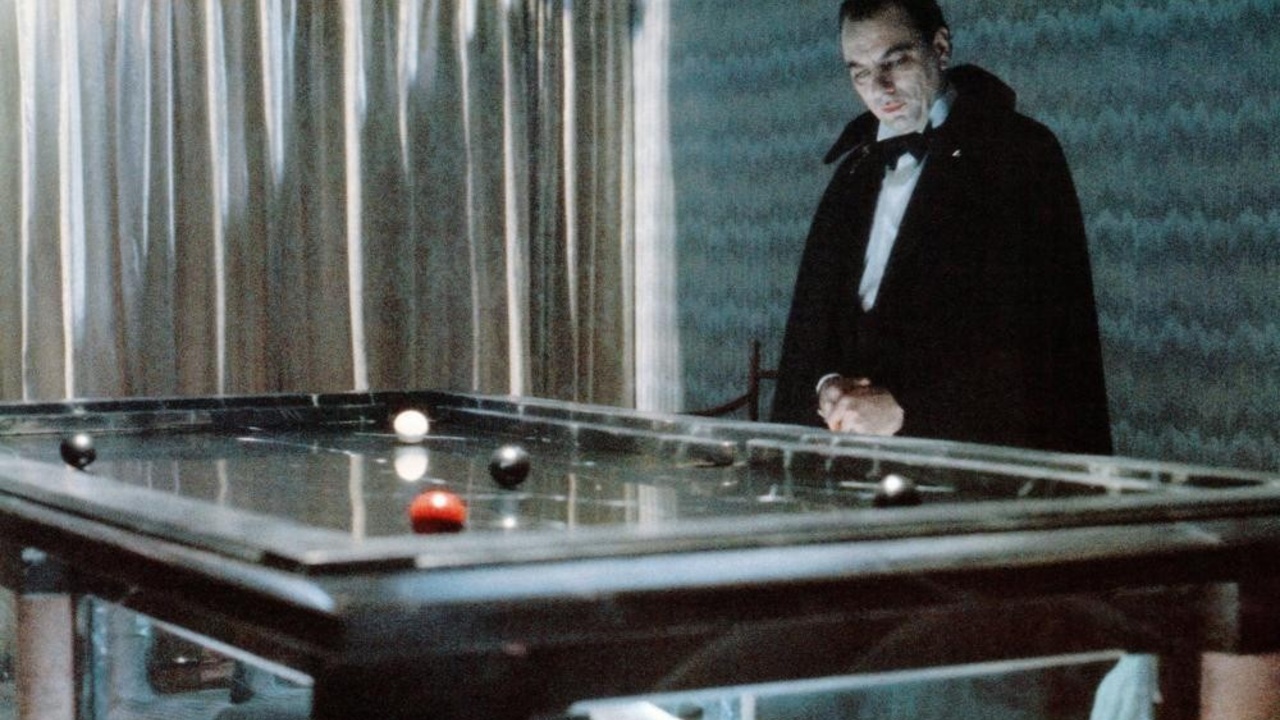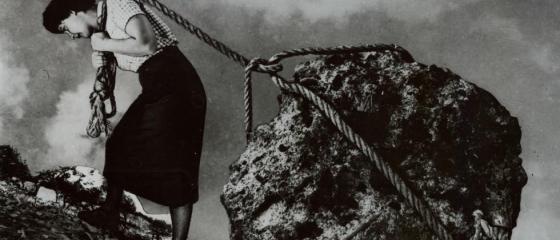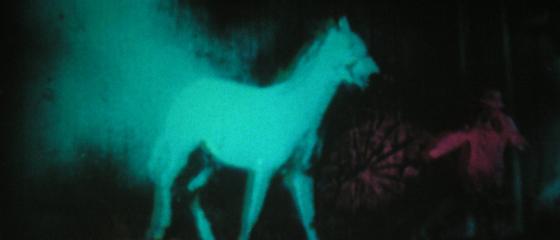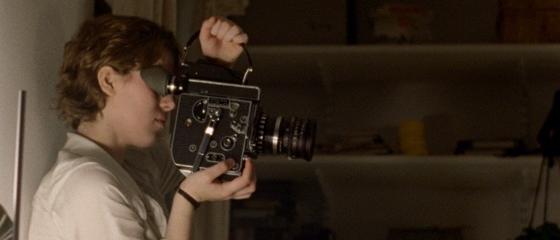The collective imaginary and the most fervent cinephilia very often consider the musical as an eminently American genre. Studies, retrospectives or anthologies on the subject are populated by American titles, leaving an insignificant space for the rest of the world. Undoubtedly, those works that were born under the influence of Broadway established the bases for a cinema that became the most popular in Hollywood since the arrival of sound, with The Jazz Singer (Alan Crosland, 1927) as a pioneer. Well, the Yankees gave birth to the musical, but the most original and unexpected re-readings, twists and revelations of the genre have occurred in other latitudes. Still in 1929 Europe began to place the camera and microphone in front of melodies, operas and songs with Germany and France at the forefront - German authors such as Reinhold Schünzel and G. W. Pabst and the Frenchman René Clair offered memorable incursions. In the early 1930s, Spain would burst in with works denoting the influence of zarzuela, and Russia with filmmakers as brilliant as Grigori Aleksandrov or Ivan Pyryev.
However, it would be in the 60s when the authors from the mainland begin to solidify their true imprint, highlighting the French. The eternal Jacques Demy modified the future of the genre, bringing an unusual dose of creativity, transforming the use of colour and musical numbers. His wake was continued, in a punctual way, by a great number of contemporary compatriots, such as his accomplice Agnès Varda, Godard, Rivette, and of course Alain Resnais.
Despite the emergence of other key figures such as Gottfried Kolditz in East Germany or Eldar Ryazanov in the USSR, Demy confirmed himself as the true icon of European musical cinema, a light spot so powerful that it ended up frustrating a rich legacy.
The increase of music programs in television, the inevitable erosion of the traditional formulas of the genre, and the unstoppable tendency to produce routine movies to the greatest glory of the pop and rock stars of the moment, caused - between the late 60's and early 70's - that the musical lost its popularity throughout the West (while in India and Egypt lived a real golden period during those years). Paradoxically, from that moment on, the most groundbreaking, extravagant and unexpected contributions in history emerged in Europe. Thus, 50 years ago, a handful of directors from this continent wrapped in perpetual flames understood that in order to affect their complex realities it was necessary to musicalize the verb, take the scores as a weapon and give free rein to eccentricity.

A prime example of this perspective was UN, DOS, TRES... AL ESCONDITE INGLÉS (1969), debut feature by Iván Zulueta, the great damned of Spanish cinema, about a group of young musicians who - still under Franco's dictatorship - will do the impossible to boycott a song they detest, and which will represent Spain at the Eurovision Song Contest. Being a parody of this type of contest (after the triumph of the singer Massiel) as well as one of the films that Richard Lester made with the Beatles, this delirious story shot without a script, furiously psychedelic and with the performance of several leading groups of the time quickly became a cult object.
The reflection of youth frustrated by the repression of authoritarian governments trying to block a society thirsty for progress is also visible in DON'T CRY, PRETTY GIRLS! (1970), the only musical by Marta Mészaros and possibly her most daring work. In it, after spending tedious days in the factory, a group of boys and girls breaks with the monotony attending parties and night concerts. A spirit of rebellion against the social dissatisfaction pioneer in communist Hungary.
Captivated by the passion and epic of opera, the German filmmaker Werner Schroeter took his cinema to its absolute pinnacle in THE DEATH OF MARIA MALIBRAN (1972), a drama inspired by the famous 19th-century Spanish prima donna María Malibrán - performed virtuously by Magdalena Montezuma - who died at the age of 28 while singing at a musical evening. A ghostly film of limitless expressiveness, endowed with a hypnotic tempo, which is imbued with gestures and the colossal emotional arc of the performing arts, taking as visual references pioneers such as Murnau or Mauritz Stiller.
A similar atmospheric torrent can be found in THE DEVIL'S BRIDE (1974), undoubtedly the most innovative musical from the Baltic and masterpiece of the underrated Lithuanian conductor Arūnas Žebriūnas. His Faustian plot is about a demon making an irrefutable offer to the owner of a mill, asking in exchange to marry his daughter. Compared to Jesus Christ Superstar for his irreverence, the film unfolds an overflowing and unpublished imaginary.
Some of the great masters of universal cinema, whose trajectories have been signified by their sharp and enlightening political impulses, leaned out onto the musical only once, injecting luminosity into their trajectories and taking the genre to unimaginable parameters. This is the case of Theo Angelopoulos with his third feature film THE TRAVELLING PLAYERS (1975), a monumental journey through the history of Greece between 1939 and 1952 following a group of itinerant actors who go from village to village always representing the same drama. Speaking of the genre he adopted to confront this epic monument of resounding antifascist discourse - winner of the Critics' Prize at Cannes - Angelopoulos remarked: "I believe that the musical allows you to transform everyday life into something else".
Another eternal figure, deeply missed and indispensable, Chantal Akerman, conceived in GOLDEN EIGHTIES (1986) a fusion of tributes, both to the MGM classics and to Demy, leading to a unique work. She herself wrote the lyrics of the songs, composing an exciting portrait of the workers of a Brussels shopping mall, their loves and passions, all filmed with a palette of sparkling and unembraceable colours in a single viewing.
Alan Clarke, the legendary author of Made in Britain (1982), Christine (1987) or Elephant (1989), delivered with BILLY THE KID AND THE GREEN BAIZE VAMPIRE (1987) one of the most unclassifiable works of British cinema, described by the BFI as "the first musical of vampire billiard players in history". But despite its purely bizarre appearance - as always in Clarke's work - this cult film also hides a powerful critique of Thatcherism as it sets up the battle between working class youth and the worn-out English elite.

A scourge as deeply rooted as the camorra was dissected with unprecedented inventiveness by Roberta Torre in her debut film TANO DA MORIRE (1997), inspired by the murder of an important mafia member in Palermo. Subversive and hilarious in its social vision, charismatic and suggestive in its chromatic composition, TANO DA MORIRE can be considered the most accurate exponent of the postmodern musical.
With the turn of the century, the genre at a global level seemed to be revived thanks to titles such as Dancer in the Dark (Lars von Trier, 2000) or Moulin Rouge (Baz Luhrmann, 2001), notorious successes between the audience that nevertheless accused an exasperating Manichaeism and under whose spectacular features were hidden constructions that were completely conventional. We would have to wait until 2004 to find another milestone in the iconoclastic musical, A CARA QUE MERECES, a memorable debut and the birth of a fundamental name in contemporary cinema, Miguel Gomes, which already promised unlimited doses of originality and good humour. It is the hilarious fable of Francisco, a man on the verge of claustrophobia and the crisis of the 30s, who begins to recall and question his childhood, leading to a version of Snow White and the Seven Dwarfs.
In LA FRANCE (2007) - winner of the Jean Vigo-Prize - the inimitable Serge Bozon prepared an unprecedented alchemical formula, mixing war cinema, comedy and music to focus on the most terrible apogee of the First World War. We found here the young Camille looking for her husband, who is devastated at the front. Alarmed, she decides to leave her house dressed as a man in the hope of finding him. In her adventure she meets a group of soldiers who interpret the conflict in their own way, trying to find some light in one of the gloomiest panoramas Europe has ever seen.
Also, if seemingly impossible mixtures are involved, TOMORROW IS ALWAYS TOO LONG (2014) occupies a cardinal place. With his peculiar combination of documentary, musical, animation and television, the artist Phil Collins creates a semblance of raw Glasgow, but also of its most fantasy drift. Scenes of songs performed by ordinary people involved in the creative process are interspersed with Matthew Robins' animations and discussions about the problems that plague Scottish society.
This brings us to 2019, the year that reaffirms the ability of European filmmakers to continue to take musicals to territories never seen before. This is demonstrated by several of the films that participate in different competitions of our programming, such as THE GRAND HOTEL BALLET (included in Cinéfilos del Futuro), in which Jacques Deschamps documents the learning of a group of students from a prestigious French hotel school and the sung expression of their dreams and illusions. In the Official Section we find JOAN OF ARC (Bruno Dumont), new portrait of the myth that confronted the Church and other establishment that contains what is possibly the most brilliant musical number of recent times; and of course TECHNOBOSS, in which João Nicolau builds an endearing character before the abyss of retirement and emotional emptiness, who invents songs to understand and support the intricate course of existence.
Finally, we can only trust and follow the example of the immortal Lithuanian-American Jonas Mekas, who left us barely eleven months ago leaving an irreplaceable void, and who, in one of his last flames of inspiration, shouted: "I Sing and I Celebrate".
Javier H. Estrada
Far from aspiring to establish a conclusive canon, this retrospective aims to point out some milestones of that European musical cinema made in the last 50 years that moved away from orthodoxy to open non-transitable paths. This proposal serves as a starting point to delve into this passionate and little studied question, which could also include, among many others, Sayat Nova (Sergei Parajanov, 1969), Topical Spanish (Ramón Massats, 1970), Moses and Aaron (Danièle Huillet & Jean-Marie Straub, 1975), Yuppi Du (Adriano Celentano, 1975), Tommy (Ken Russell, 1975), Gypsies Are Found Near Heaven (Emil Loteanu, 1976), Hic Digitur Dei (Antoni Martí i Gich, 1976), Rock’n Roll Wolf (Elisabeta Bostan, 1976), Régime sans pain (Raúl Ruiz, 1984), Crespià, the Film Not the Village (Albert Serra, 2003), or Jeannette (Bruno Dumont, 2017).
All the films in the retrospective will be screened in their original format, 35 millimetres (A CARA QUE MERECES, THE DEATH OF MARIA MALIBRAN, THE TRAVELLING PLAYERS, TANO DA MORIRE, BILLY THE KID AND THE GREEN BAIZE VAMPIRE y LA FRANCE) and DCP from digital files (TOMORROW IS ALWAYS TOO LONG), except DON’T CRY, PRETTY GIRLS!, THE DEVIL’S BRIDE, GOLDEN EIGHTIES, y UN, DOS, TRES… AL ESCONDITE INGLÉS, which will be screen in DCP format from restored copies.
Our gratitude to Yorgos Krassakopoulos, programmer of the Thessaloniki Festival.







